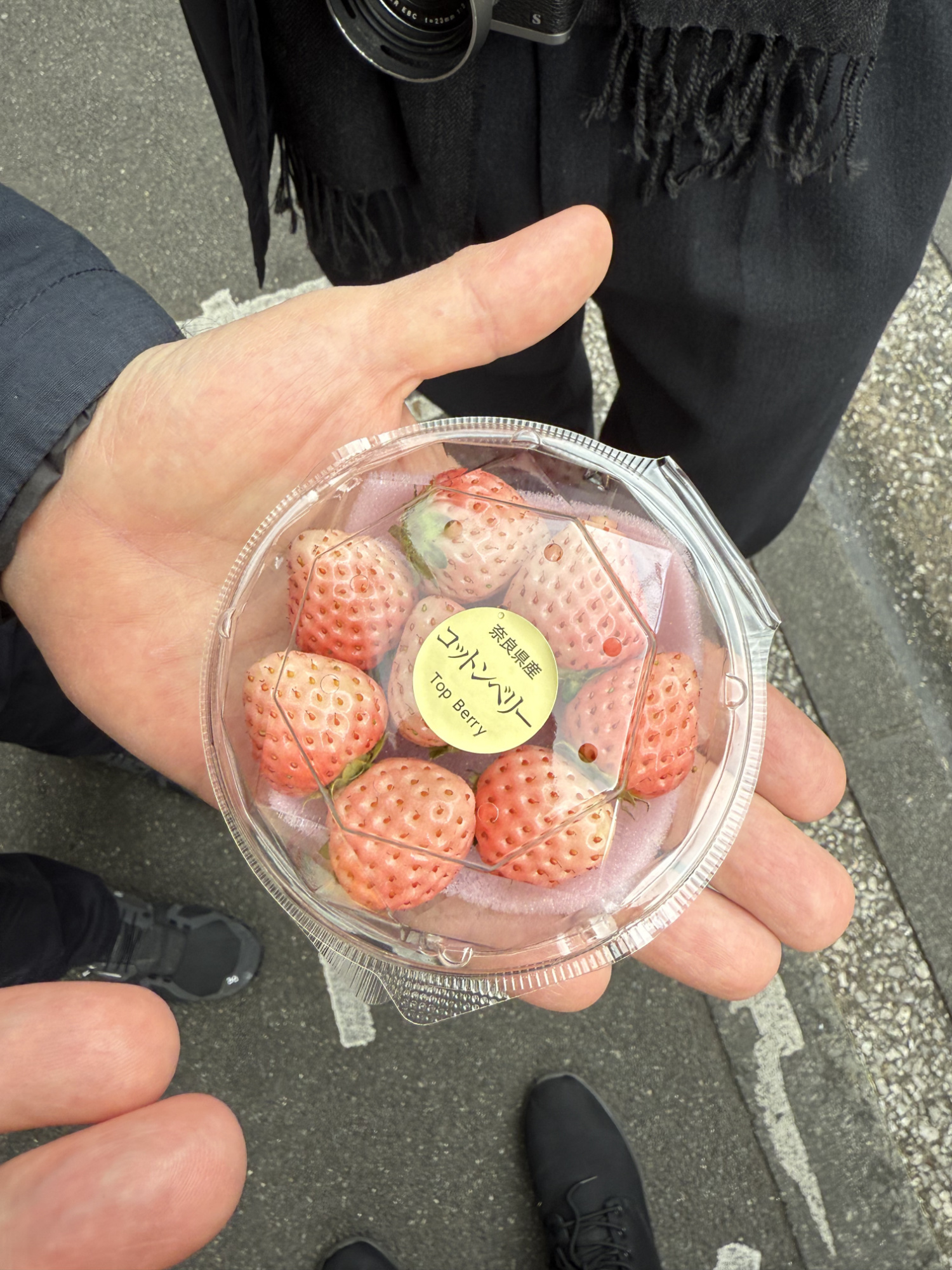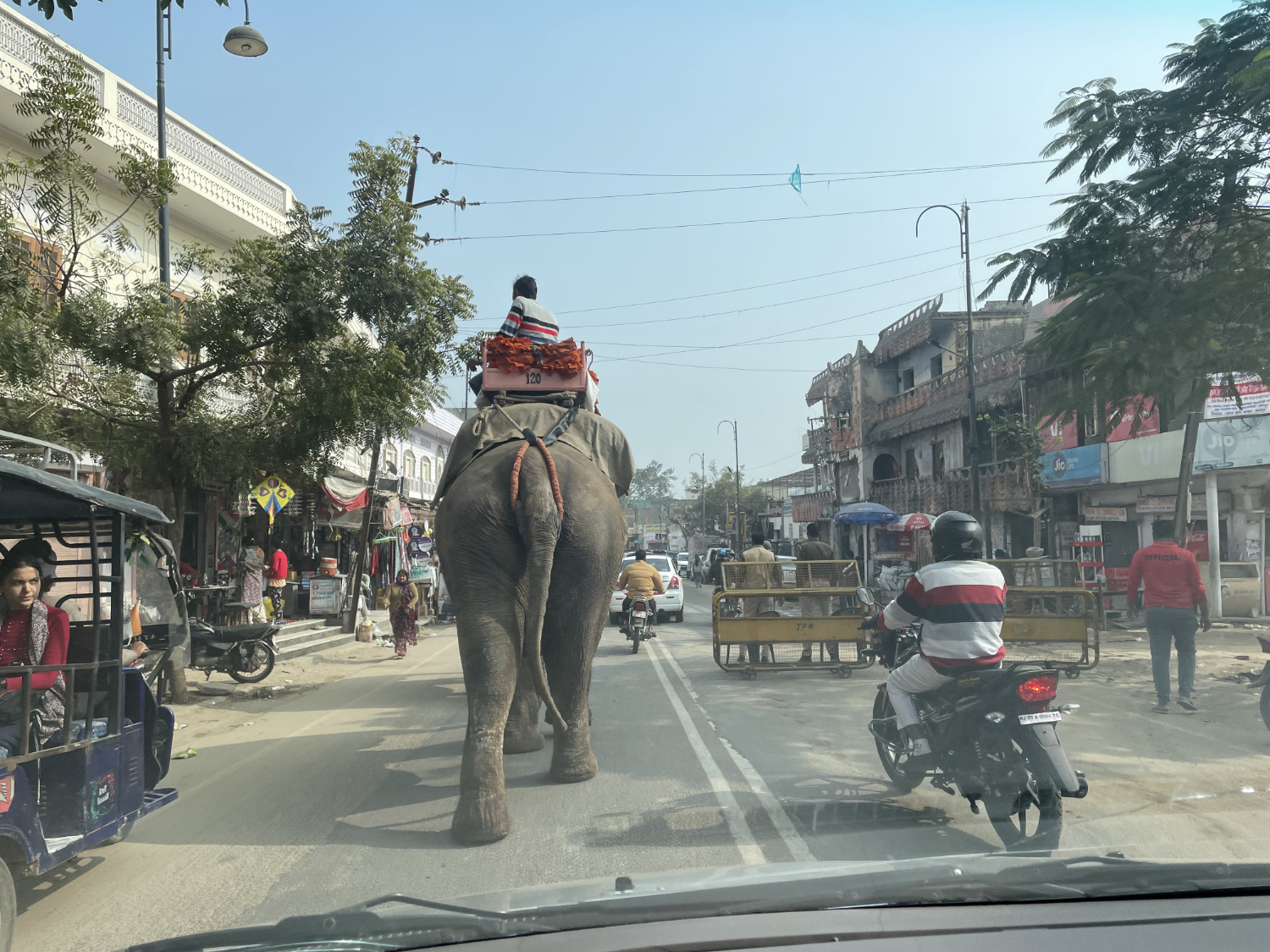Recently I was lucky enough to be able to spend a few days in Tokyo. Strolling through this wonderful city I could not resist the temptation to compare it to Indian cities (which I already know). Tokyo seems to be in many ways the antipole to - let’s say - Delhi.
One of the first things probably most foreigners note in Japan is the exceptional discipline of Japanese people. On many streets the sidewalks are only marked with paint on the street. First I found it weird that such a rich city would choose such a cheap way to build sidewalks. But then it came to my mind that the curbs in our cities are actually the implementation of an automatic punishment for drivers who don’t respect the rules. Japanese people simply don’t need this kind of punishing mechanism because they always stick to the rules. This can be seen also at crosswalks where people would wait a long time for the green light even if there is not even a single car in sight.
India has - surprise surprise - traffic rules too. But - in contrast to Japan - nobody cares even a little bit about them. I always had this feeling that traffic lights are more for decoration than really serving a purpose. It’s even very common that vehicles are driving on the wrong lane. During my first days in India, I was expecting crashes all the time. But in the end, actually surprisingly little goes wrong.
The other thing which foreigners realize quickly in Japan is the exceptional quality of almost every product or service you enjoy. It’s fair to say that the Japanese are true quality fetishists (in a good way!). We bought some higher quality strawberries at a market. We bought them more for fun because they had a packaging you would expect to see rather around some jewelry from Tiffany than a simple fruit. I was quite sure that these berries must be heavily overpriced at around 5 USD for a small bunch.
But I was flabbergasted when I actually put a berry into my mouth. It was by far the best strawberry I had ever tasted. I even had this feeling that before this moment I did not really know what a strawberry actually is. I can only imagine how a 500 dollar strawberry (they exist!) might taste.
One evening we were all very tired and hungry so we went into a random budget restaurant nearby. The meal was not the best I ever had but of really astonishing quality considering its very low price. But the ordering process was painfully over structured. We could only order by scanning a barcode and then entering our order in some kind of online shop on our tiny mobile phone screens. On the table we even found an A4 sized instruction manual describing in great detail how to use the ordering system.
Of course there was absolutely no way to express any special wishes.
And this connects the restaurant to the traffic. In both cases the clearly defined structure of the problem allows an extremely efficient implementation. Be it an efficient traffic flow or a highly automated process for ordering food (and probably even food preparation). But this works only if people strictly adhere to the rules which maintain this clear structure. Therefore flexibility is mostly lost. In some restaurants the machine for ordering food is at the entrance. If you have taste for another beer later, you feel a bit lost if you don’t want to walk back to the machine. To fit into a world full of robots you have to learn how to behave like a robot yourself.
Indian restaurants work completely differently. They have a menu card of course, but I noticed that many Indians would not even open it. They would rather immediately order a certain dish and even specify a long list of special requirements („I would like to have lots of coriander on top and ...“). Similarly, many Indian housewives cook four different types of dal for lunch because each family member has a slightly different preference for how it should be cooked.
Also, most surprising for me, the expensive restaurants in India are often not the ones offering the really good food. If you want to enjoy super tasty Indian food you have to eat cheap street food. The fancy restaurants have a different purpose. Indians go there with their families. And each generation has a completely different taste. While the youngest might want a pizza, teenagers order an American style burger, the parents like Indo-Chinese food and the grandparents fancy traditional local cuisine. So for Indians, a good family restaurant is a flexible restaurant which is able to fulfill a very broad spectrum of wishes. It is clear that the quality of these many different dishes cannot be the same like in a street food stall where the same dish is cooked for 20 years.
The Japanese desire extreme quality and are willing to compromise heavily on flexibility while the Indians crave extreme flexibility and are often willing to compromise heavily on quality.
Ultimately they have two extreme and opposing visions of luxury.
The Indian vision of luxury is a „genie in a bottle“ which fulfills every wish everywhere. The Japanese instead rather dream of a team of powerful spirits from which each is able to fulfill one very particular wish to extreme perfection.
Of course the Indian „genie in a bottle“ works - as it is currently realized - not perfectly. This is a huge challenge for tourists. In theory you can order a french „Coq au Vin“ in every restaurant and the staff will - if you are willing to pay - also do everything possible to organize the dish for you. But it is - in most places - not a wise thing to place such an order. Therefore the „genie in a bottle“ is not an ideal black box, you must know how it actually works internally. What it can do well and what rather not, depending on the current situation. Also the Indian „genie in a bottle“ has no touch screen. As it is realized using human labor you must (can!) talk to it.
The Japanese dream of luxury has a huge advantage: it can be automated almost infinitely using machines and computers. On the other hand, the Indian „genie in a bottle“ vision of luxury is today - very similar to the early automaton chess player „Mechanical Turk“ - implemented using human labor and cannot be efficiently automated yet.
This explains why Japan is so much wealthier than India today.
But what about the future?
Today we try to teach AI our traffic rules. But will they still be required once most cars are navigated by AI? Maybe AI will be still able to drive us safely even in the absence of shared rules. Cars could negotiate traffic sequences among themselves on the fly over wireless data channels. On each crossing hand tailored to the current needs. Even the traffic direction on the lanes could be determined spontaneously as a result of a kind of phase transition (the phenomenon is well studied from pedestrian traffic).
Fixed traffic rules are only required because humans are very limited in their data processing and communication speed.
Maybe, in the not too distant future, the Indian vision of luxury can be combined with the Japanese one. If - thanks to AI - intelligence becomes abundant, we can free ourselves from all the annoying „structure“ we have brought into our modern high tech lives and still enjoy great quality.
But as things are now, it seems that the Japanese people were able to get much closer to their vision of luxury than the Indians.
But fulfilled dreams don't make always happy. They can disappoint in unexpected ways.
I remember a short rickshaw trip in Varanasi. We were driving through a particularly infernal traffic. Just in front of our vehicle two school children, both around nine years old and with satchels, were walking slowly hand in hand. Our driver was very annoyed and he was intentionally driving only a few dozen centimeters behind them and even honking nervously. I felt extremely bad about this situation and the sight was really heartbreaking. I was very happy when they finally turned left into a small road and our driver could accelerate again.
Later back home I was always wondering, how these two children managed to remain so calm, even ignoring the frequent honking of our driver completely. Very similarly I was always amazed how extremely calm cows were, standing in the middle of this seemingly chaotic traffic while vehicles were passing by only a few centimeters away from them.
These situations came to my mind many times afterwards. Until one day I realized that it is not true that Indian traffic does not follow any rules. Even in the absence of special rules some more general rules alway apply. And in the case of Indian traffic, they are actually very simple:
- Take care of living beings. Be it yourself, others humans or a cow or a dog.
- Be attentive and use your brain
Therefore these two children must have been deeply aware of the fact that people follow these rules very carefully. In a weird way all these vehicles around them were not a threat but proved them every day again that people around them cared for them. The traffic was - somehow - embracing them all the time on their way to school.
Now you might call this recollection euphemistic. But it’s not my intention to praise the admittedly often horrible traffic in India. The important thing is: in a society where we can do things in different ways (without getting punished for some of them!), it matters how we do them. Only then it becomes important that we are kind to each other. And every time we do something the right way out of free will, it becomes an expression of kindness. In this sense India is a very warm country. When I saw sad eyes in India, it was almost always because of financial hardship.
There is much less poverty in Japan but people look very rarely happy nonetheless. It seems like the overwhelming politeness I experienced everywhere in Tokyo is the only thing left people can do for each other. A politeness which can transform quickly into disturbing rudeness at the slightest transgression. The pale and hollow shadow of what was once true kindness.
Don't get me wrong: I'm not saying that people in Japan have no kindness in them! I'm only saying that their current structure of society does not allow them anymore to apply it in a meaningful way. The abundance of politeness in Japan is an expression of a strong desire to be kind.
I‘m also not surprised that Indias population is so much younger compared to the Japanese one. Children, radically chaotic spirits of sublime anarchism, fit perfectly well into the Indian society but must feel like erratic misfits in Japan.
And if you feel insulted by these lines now, my dear Japanese/Indian friend, don't worry. They are just sparks of a mind which admittedly values only the considerateness part of politeness but still loves Japan/India and you.


Image on top: Shutterstock
Follow me on X to get informed about new content on this blog.
